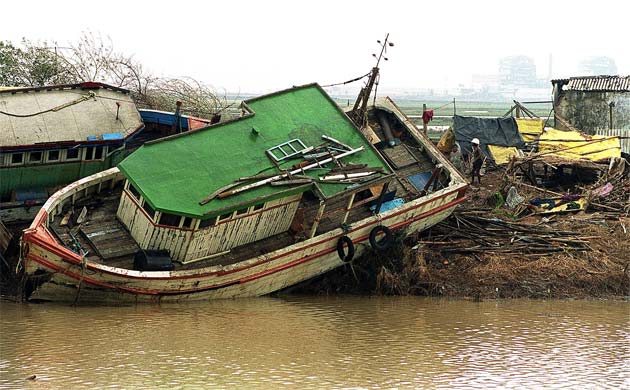+91 80 25586293
Photo Courtesy: NDTV
ODISHA SUPER CYCLONE 1999
On 29th October 1999, the Super Cyclone, also known as Paradip Cyclone, hit Odisha with wind speeds of up to 250 kmph. It caused the deaths of about 10,000 people, and heavy to extreme damage in its path of destruction. Often termed as the black Friday tragedy, the cyclone flattened lakhs of houses, uprooted trees and destroyed infrastructure. Thousands of livestock were killed, paddy and other crop fields were submerged and hundred thousands of people were affected by the disaster. Life in the coastal Orissa was brought to a standstill. Large areas along the coastline were inundated. The cyclone destroyed or caused damage to lives and properties in the coastal districts such as Balasore, Bhadrak, Kendrapara, Jagatsinghpur, Puri and Ganjam. A white paper on the loss and damage profile of the 1999 super cyclone prepared by the State Government in 2000 stated that there were 9,885 human casualties. The paper estimated that 13 lakh hectares of paddy crop, 1.76 lakh hectares of vegetables and 2.57 lakh hectares of other crops were destroyed. The disaster destroyed 22,143 fishing nets and 9,085 boats causing great loss in the lives of the fisherfolk community. The aftermath of cyclone also saw the major loss of livestock in the cyclone-affected area. The report of the government put the loss of cattle heads at 3,15,886, poultry at 18,83,468 and other small animals at 3,16,372.ActionAid India Response
Soon after the disaster, ActionAid India (AAI) in alliance with Bharat Gyan Vigyan Samiti (BGVS)swung into action and started immediate relief and efforts towards restoration of lives of those affected by the cyclone. AAI and BGVS chose Erasama and Balikuda blocks of Jagatsinghpur district and focused on reaching out to the most affected families and groups including Bengali immigrants, Dalits, women and children at risk — single women, orphans and destitute, persons with disability and the aged. Two factors guided the decision to work in Jagatsinghpur, one, the intensity of the impact of the cyclone was more in this district and secondly, we got support from the district administration to initiate the process of helping response and recovery. The vulnerable communities were focused on because casualties amongst the Bengali migrants and people staying along the coastline were far more. The Impact of the cyclone was most among the target groups because of their poverty, non-availability of alternative sources of income and social status. Recovery from the cyclone had also been slower for selected target groups because they did not have savings to draw on or get support from relatives who themselves were poor and very often similarly affected. We worked in 337 villages in 40-gram panchayat under Erasama and Balikuda blocks of Jagatsinghpur district and reached out to a population of around 15,000. In the second phase of our interventions, we committed for rehabilitation and reconstruction of the most vulnerable survivors of the super cyclone for a period of at least three years and resolved to contribute to this massive reconstruction effort in a way that is sustainable, long-term and sensitive to the needs of the most vulnerable groups. ActionAid’s major intervention was in the distribution of relief, Food for Work programme, construction and repair of shelters, enabling road connectivity, providing health services and supplies, ensuring entitlements of the disabled, doing tree plantation, running livelihood support programmes and doing psycho-social counselling.Milestones Achieved
- Initiated the practice of focusing on single women as a category to work with including widows and aged women.
- Provided psychosocial aid to vulnerable survivors.
- Social audit introduced in disaster response work. After the completion of each phase of Food for Work in the village, a social audit was conducted to capture the voices of people about the quality of the work.
- Within 6 months of the disaster, vulnerability analysis of entire district completed.
- Micro-Level Planning conducted to identify families to whom livelihood support needed to be given.

